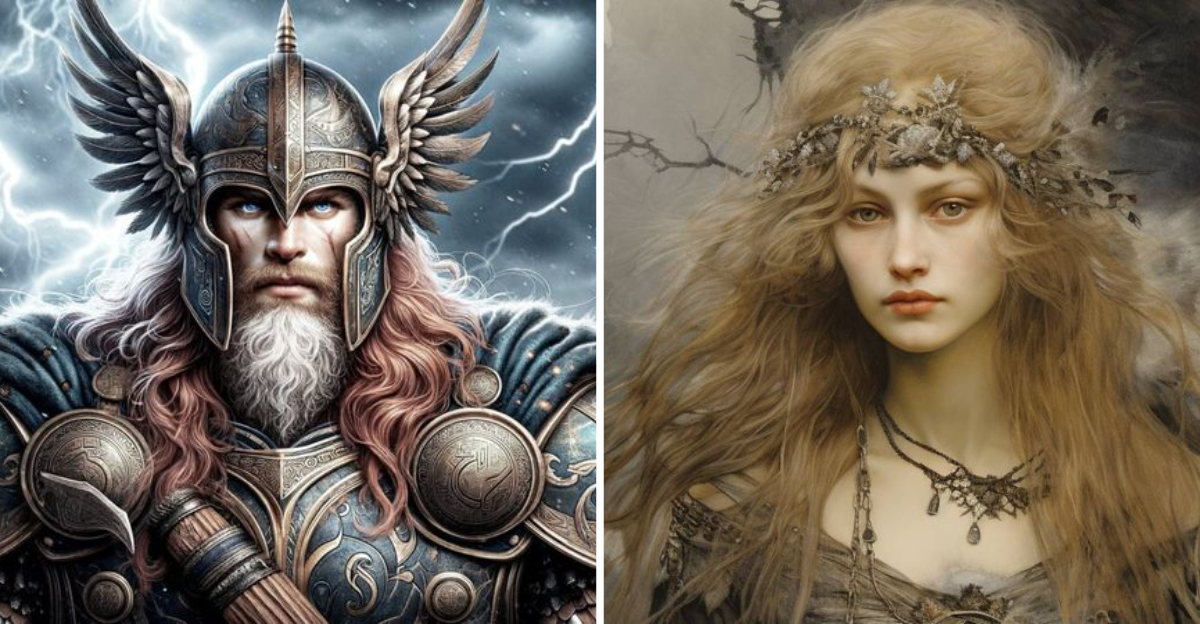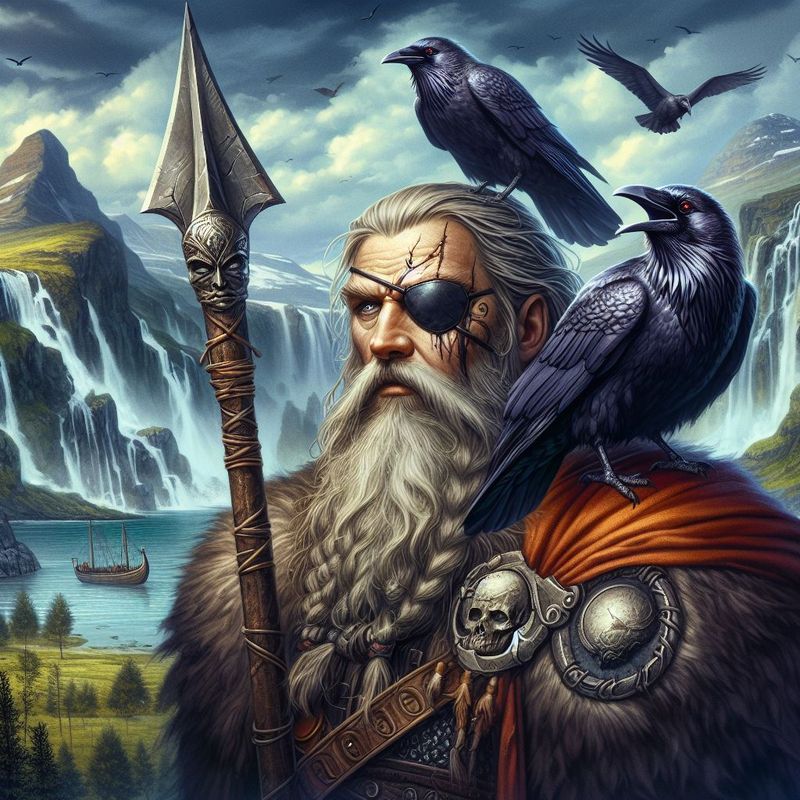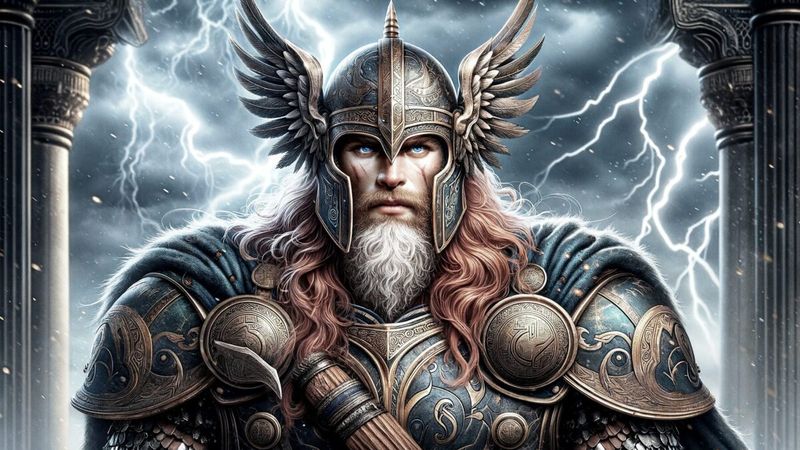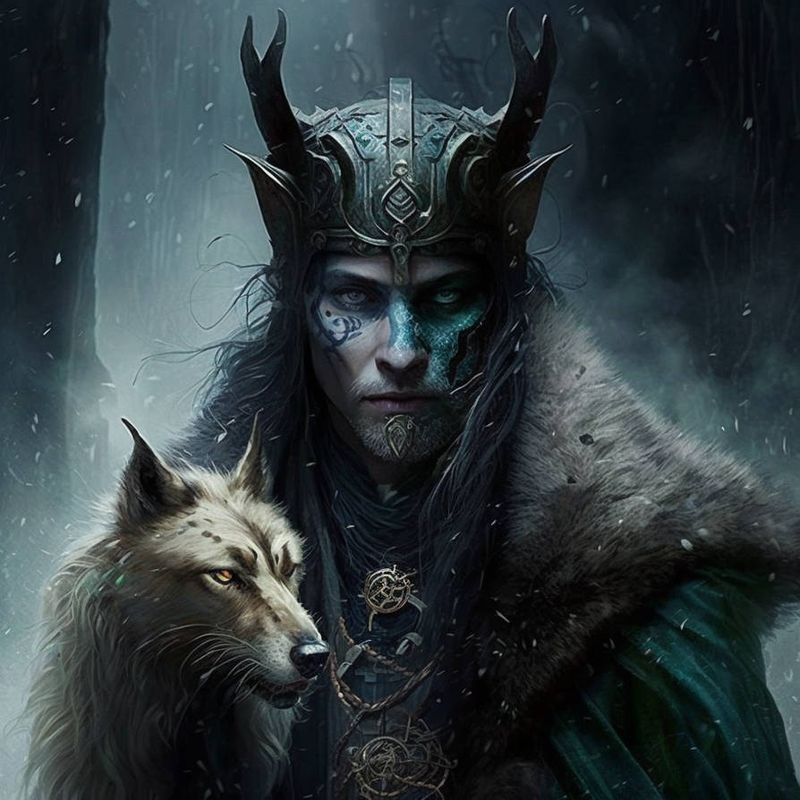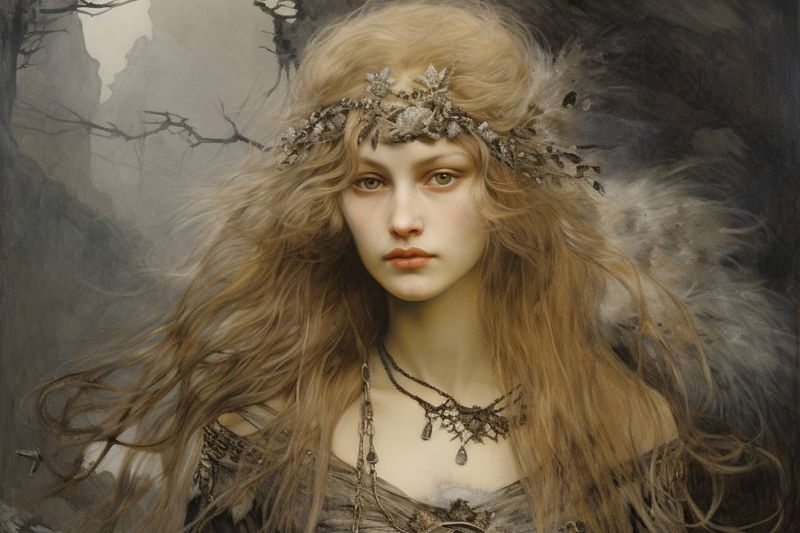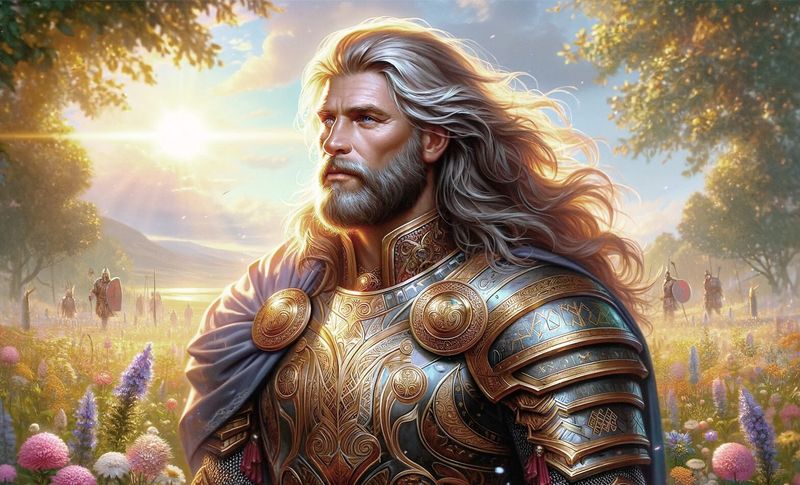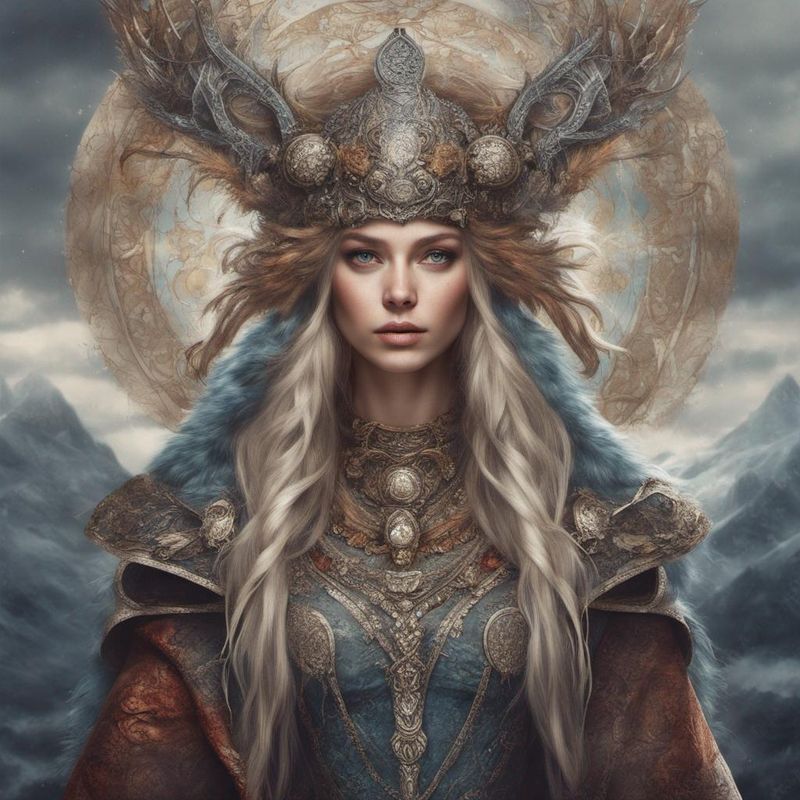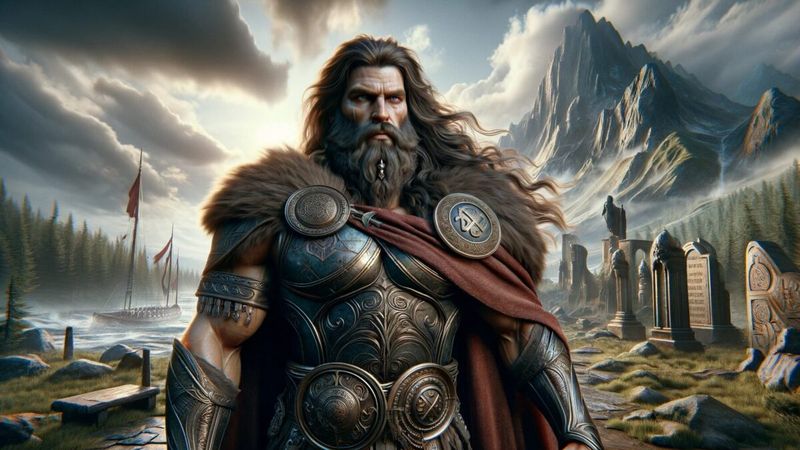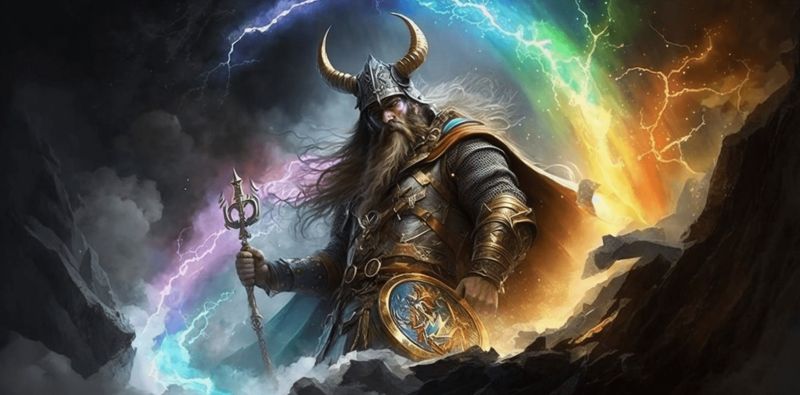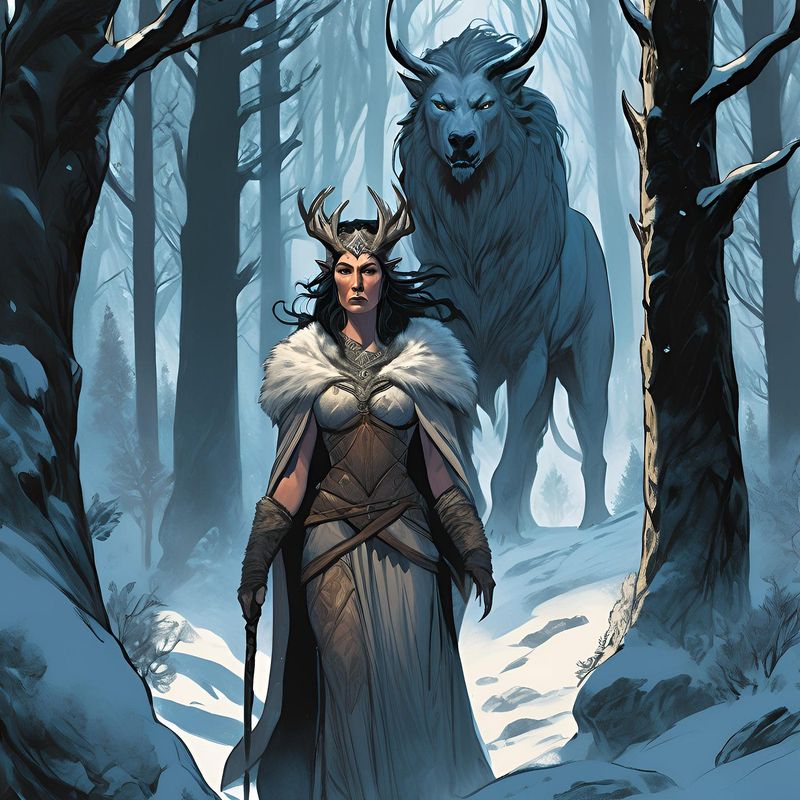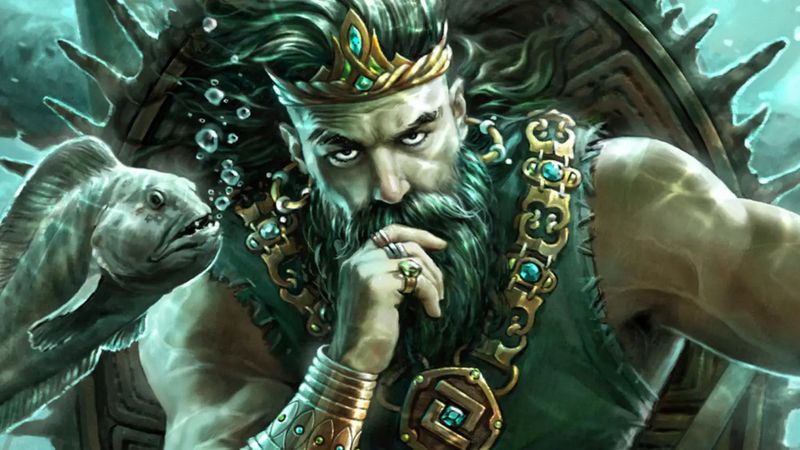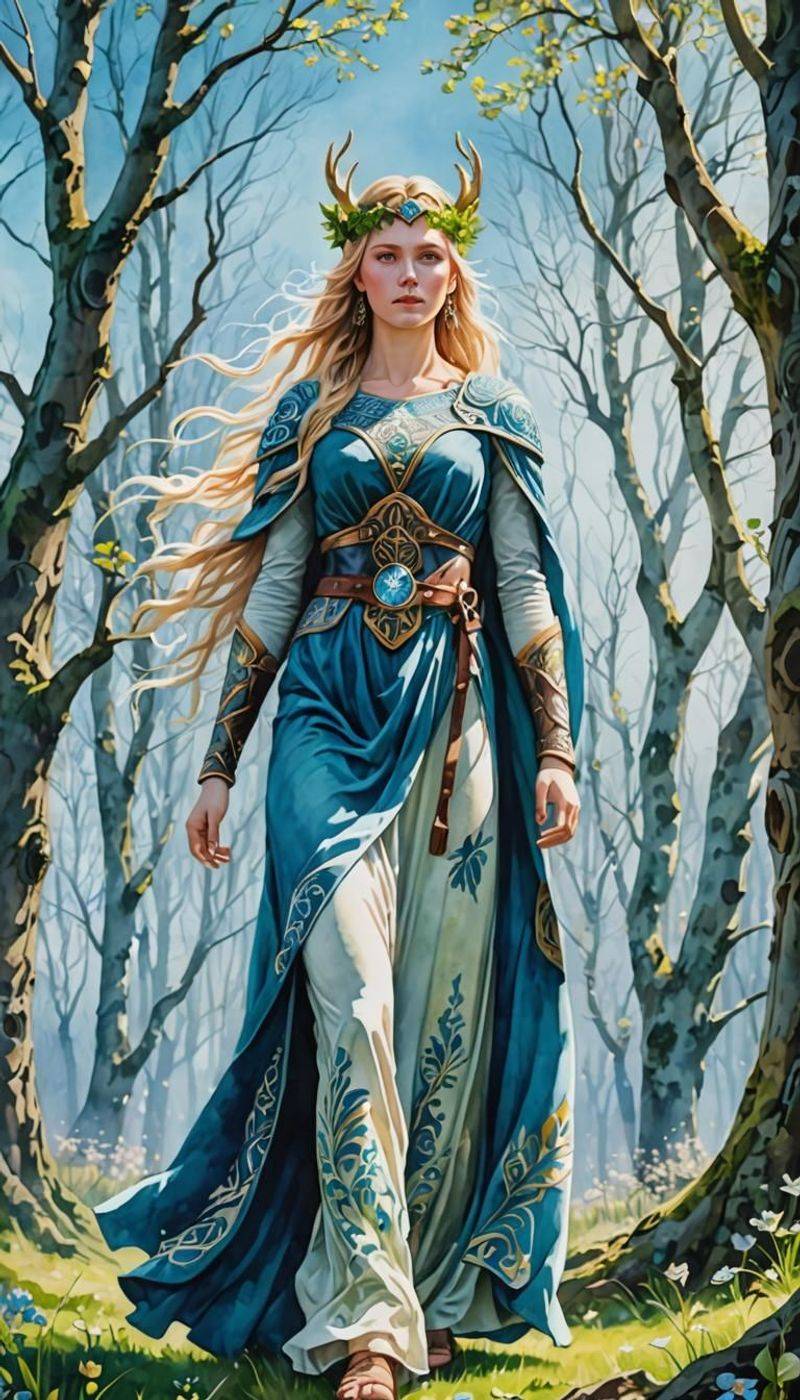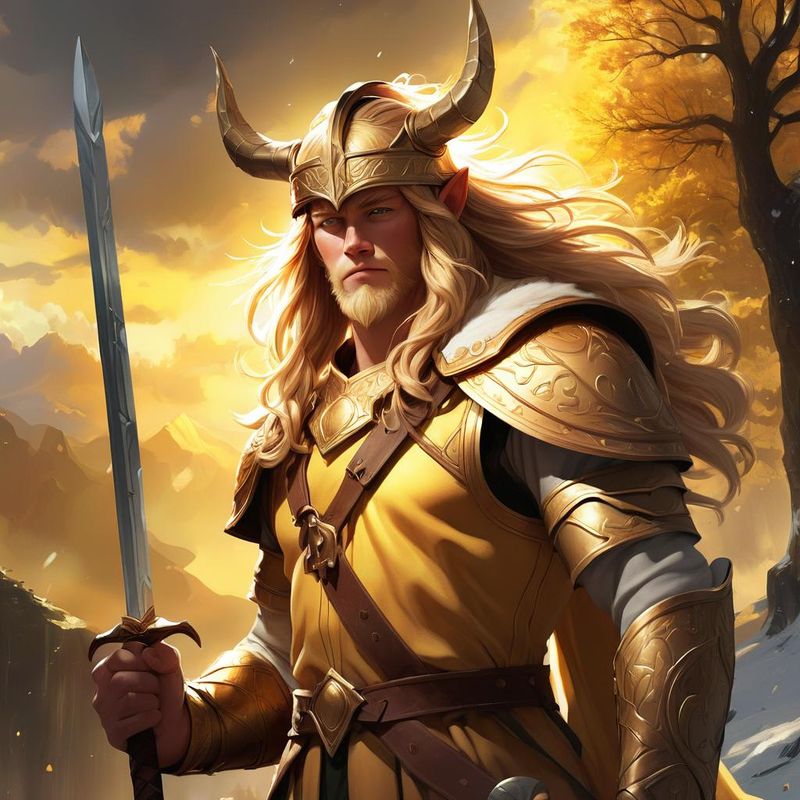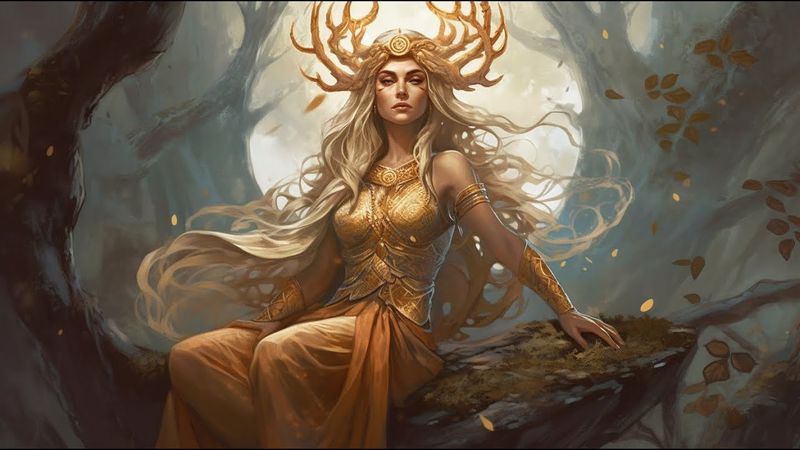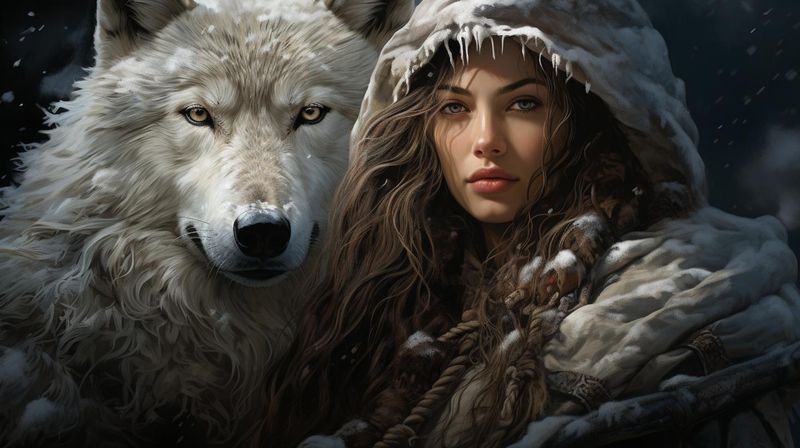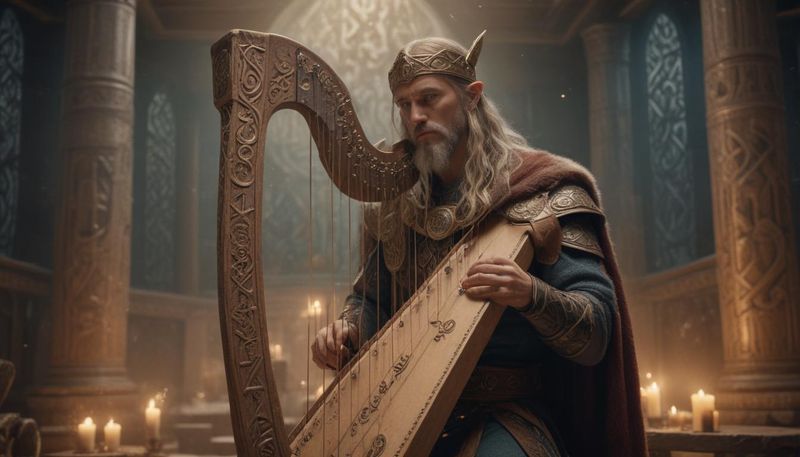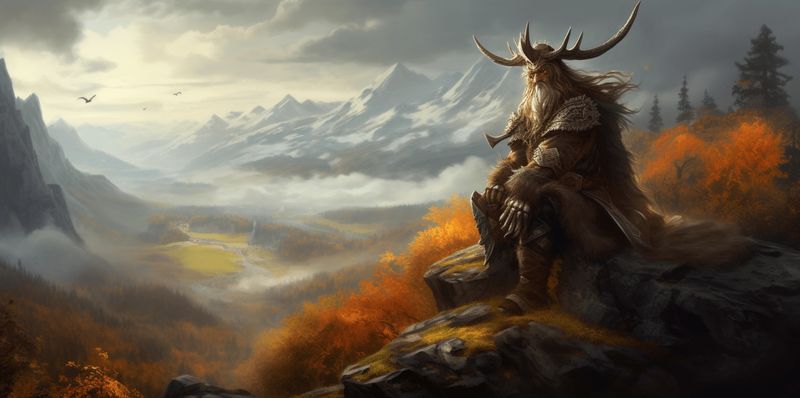Norse mythology is a fascinating tapestry of tales, with a rich pantheon of gods and goddesses who embody various aspects of life, nature, and the cosmos. These deities have captured imaginations for centuries, providing a window into the beliefs and values of the Norse people. This blog post explores 17 of these intriguing figures, each with unique characteristics and stories. From the mighty Odin to the enigmatic Hel, these gods and goddesses played pivotal roles in mythological narratives and continue to be revered and studied today. Join us as we uncover their stories and significance.
Odin
Odin, the Allfather, is the chief of the Aesir and the god of wisdom, poetry, and war. Known for his relentless pursuit of knowledge, Odin sacrificed an eye to drink from the well of wisdom. This act symbolized his commitment to understanding the universe’s mysteries.
Odin’s two ravens, Huginn and Muninn, fly across the world, bringing him information. As the ruler of Asgard, he presides over the pantheon and is often depicted as a wandering sage. His stories reflect themes of sacrifice and the quest for greater truth.
Thor
Thor, the god of thunder, is one of the most famous Norse deities. He is known for his immense strength and his trusty hammer, Mjölnir, which he uses to protect Asgard from giants. His fiery temper is legendary, but so is his sense of justice.
Thor’s journeys often involve battling chaotic forces, showcasing his bravery and dedication to maintaining cosmic order. Despite his warrior nature, he is also a protector of humanity, ensuring the safety of both gods and men.
Loki
Loki, the trickster god, is a complex figure in Norse mythology. Known for his cunning and shape-shifting abilities, Loki often plays the role of both friend and foe to the gods. His unpredictable nature leads to chaos, but he sometimes aids the gods in unexpected ways.
Loki’s tales are filled with clever tricks and dangerous escapades, reflecting themes of duality and transformation. Despite his mischievousness, Loki’s actions are crucial to many mythological events, making him an integral, albeit controversial, figure.
Freyja
Freyja is the goddess of love, beauty, and fertility, known for her captivating charm and magical prowess. She rides a chariot drawn by cats and possesses the Brísingamen necklace, a symbol of her allure and status.
As a member of the Vanir, Freyja is also associated with war and death, choosing half of the slain warriors to join her in Fólkvangr. Her tales highlight the themes of love, desire, and the cycle of life and death, making her a multifaceted deity.
Baldur
Baldur, the god of light and purity, is beloved by all, embodying innocence and beauty. His tragic death at the hands of Loki sets off a series of events leading to Ragnarök, the end of the world.
Baldur’s tales emphasize themes of loss, prophecy, and resurrection. His story serves as a poignant reminder of mortality and the inevitable cycles of fate, resonating through Norse mythology as a symbol of hope and renewal.
Frigg
Frigg, the queen of Asgard and wife of Odin, is the goddess of marriage and motherhood. Known for her wisdom and foresight, she is a nurturing figure who oversees domestic affairs and family bonds.
Frigg’s ability to see into the future grants her a unique perspective, though she often remains silent about her visions. Her stories highlight the importance of family, loyalty, and the unseen threads of destiny that bind the universe.
Tyr
Tyr, the god of war and justice, is renowned for his courage and integrity. His most famous story involves sacrificing his hand to bind the monstrous wolf Fenrir, showcasing his willingness to protect the gods at great personal cost.
Tyr’s tales reflect the themes of honor and sacrifice. His steadfast nature and commitment to justice make him a respected figure in Norse mythology, embodying the warrior spirit and the principles of fairness and law.
Heimdall
Heimdall, the watchman of the gods, stands guard over Bifröst, the rainbow bridge leading to Asgard. Known for his acute senses, Heimdall can hear grass grow and see for miles, ensuring no threat goes unnoticed.
Heimdall’s role is crucial during Ragnarök, where he blows his horn to signal the end times. His vigilance and dedication to his duty exemplify themes of protection and preparedness, making him a crucial guardian of the divine realm.
Hel
Hel, the goddess of the underworld, rules over Helheim, where she receives the souls of those who did not die gloriously in battle. Her dual appearance symbolizes her dominion over life and death.
Hel’s tales are often somber, exploring themes of mortality and the afterlife. She is a reminder of the inevitable end that awaits all, yet her presence also signifies the continuation of existence beyond the physical realm, adding depth to the mythological understanding of death.
Njord
Njord, the god of the sea and wind, is revered for his control over maritime elements. He ensures safe voyages and abundant catches, making him a vital deity for seafarers and fishermen.
As a member of the Vanir, Njord’s stories often involve themes of wealth and prosperity. His peaceful nature and connection to the sea reflect the importance of harmony with nature, and his influence extends to trade and navigation, which were crucial aspects of Norse life.
Idun
Idun, the goddess of youth and rejuvenation, is the keeper of the golden apples that grant the gods their eternal youth. Her role is essential in maintaining the vitality of the Aesir.
Idun’s tales often involve her being pursued or kidnapped, highlighting the gods’ dependence on her gifts. Her presence represents the concept of renewal and the cyclical nature of life, underscoring the importance of youth and the endless pursuit of vitality in Norse mythology.
Frey
Frey, the god of fertility and prosperity, is celebrated for bringing abundance and peace. As a member of the Vanir, he oversees growth and harmony in nature.
Frey’s stories often emphasize his connection to the earth and his role in ensuring plentiful harvests. His ability to bring peace highlights the balance between humanity and the natural world, making him a beloved figure whose influence is felt in the prosperity and well-being of the land.
Sif
Sif, the goddess of earth and harvest, is best known for her golden hair, which represents fields of ripe grain. Married to Thor, she embodies the nourishing aspects of the earth.
Sif’s tales often revolve around themes of fertility and growth, reflecting her importance in agricultural cycles. Her connection to Thor symbolizes the union of strength and nourishment, emphasizing the symbiotic relationship between nature’s bounty and protective forces.
Skadi
Skadi, the goddess of winter and hunting, is known for her strength and independence. Daughter of a giant, she married Njord in a union that symbolizes the meeting of contrasting elements.
Skadi’s stories often highlight her fierce spirit and love for the mountains. Her presence in mythology underscores themes of resilience and the natural world’s harsh beauty, making her a symbol of endurance and the transformative power of nature’s extremes.
Bragi
Bragi, the god of poetry and eloquence, is known for his silver tongue and mastery of words. Often depicted with a harp, he inspires the art of storytelling and music.
Bragi’s tales emphasize the power of language and the importance of cultural expression. His influence extends to the bards and skalds, who carry forward the oral traditions of Norse culture, celebrating the enduring legacy of song and verse in weaving the fabric of history.
Vidar
Vidar, the silent god of vengeance, is known for his incredible strength and stoic nature. He is destined to avenge his father Odin during Ragnarök, a testament to his loyalty and resolve.
Vidar’s tales are filled with themes of retribution and justice, reflecting his role as a silent guardian. His presence in mythology highlights the values of perseverance and the quiet strength that lies within, offering a powerful example of steadfast dedication to duty.
